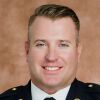As the COVID-19 outbreak escalates across the country, more fire and EMS personnel will be quarantined or isolated, forcing leaders to face difficult decisions about staffing. We asked retired firefighters: Would you be willing to serve during the COVID-19 national emergency? The results: 75% said yes, 16% said no and 9% answered unsure.
On March 13, President Trump declared coronavirus (COVID-19) a national emergency. The pandemic is expected to hit over 500,000 citizens. Of these citizens, a large percentage of the affected population will likely be first responders because we are the first line of defense for our communities. As such, there is a very real possibility that we will simply not have enough healthy first responders to meet our communities’ needs as we navigate this crisis.
In many agencies, a virus or pandemic event will directly impact 50% of the members, plus an additional 20% indirectly. Those who are directly impacted will be sick and not able to work. Those indirectly impacted will be forced to care for family and loved ones, meaning work could be limited. In the end, many organizations will likely see a significant reduction in first responders.
What if your organization’s first responders are depleted by 50%? How will we as a fire service protect our communities?
Take care of your members – and their loved ones
First and foremost, take care of your members and their families. Just like during a natural disaster, healthy organizations find ways to shelter, feed and take care of members’ immediate families. Providing a system that addresses the needs of our members’ families allows the first responder to focus on serving the community instead of being overly distracted by what’s happening with their own family, feeling the entire burden on their shoulders.
A good starting point: Create a plan to supply groceries, meals and essentials via Fire Auxiliary or a support service division. Creating meal prep that can be delivered to members’ families can relieve the burden on your responder. Note: Create different plans for contagious disease events and weather-related events. With a weather event, we will want to shelter families with loved ones. During a contagious disease event, we need isolation and quarantine for members and their families.
In addition, organizations should consider stockpiling the essentials to share with their members and families – items like bottled water, diapers, toilet paper, dry goods and other essentials in bulk that can be distributed to members and their families.
Recall members and look for community volunteers
Organizations should implement a recall process to recall retired members – and this goes for both the career and volunteer fire service. Throughout the country, we have a large population of retired volunteers and/or career fire members who are willing to assist. In fact, it’s possible their willingness to assist will become overwhelming. First responders have a deep desire to help, and when a catastrophic event occurs, people will come out of the woodwork.
How will you handle the influx of people offering their service?
- Have a plan to accept help:
- Identify a coordinator to accept and organize volunteer members.
- Identify minimum requirements for each position. Some volunteers will come with significant experience and qualifications; others will be just good-hearted people looking to help.
- Create an Incident Command System (ICS) structure.
- Reinstate former members or retired members.
- Utilize a call-back system that offers the opportunity for past members to serve again.
- Develop a call-back list of volunteers or retired members.
- Create a down-and-dirty training refresher for experienced members.
- Assign active or current members with volunteer or retired members.
- Have a plan for workers’ comp and insurance to cover the temporary members.
- Enhance mutual-aid partnerships: Cross-staffing of organizations could be a lifesaver during these events. Build relationships and agreements that can be implemented to cross-staff apparatus and response with non-affected members from neighboring organizations.
- Coordinate efforts with other local emergency services organization, like a community emergency response team (CERT) or the American Red Cross and Salvation Army. These resources can provide individuals to fill seats in non-firefighting positions, allowing you to maximize the firefighters you do have available.
Start your plan – now
When we look at the potential impact on our first responders, it becomes clear that we must create a complete plan to address all types of assistance. Fortunately, concerns over volunteers and retired members can be addressed prior to needing help – meaning it’s time to work on this now!
As we look at continuity of service and long-term impacts of pandemics, and weather events as well, it is imperative that we develop complete plans. Events like COVID-19 will be the new norm for emergency services. Thorough, complete planning, couple with the recognition that we cannot manage everything on our own, will give us a fighting chance to provide continuing service in our communities.
Editor’s note: What staffing impacts are you facing, and how are you managing the situation? We want to hear your story. Email editor@firerescue1.com.



